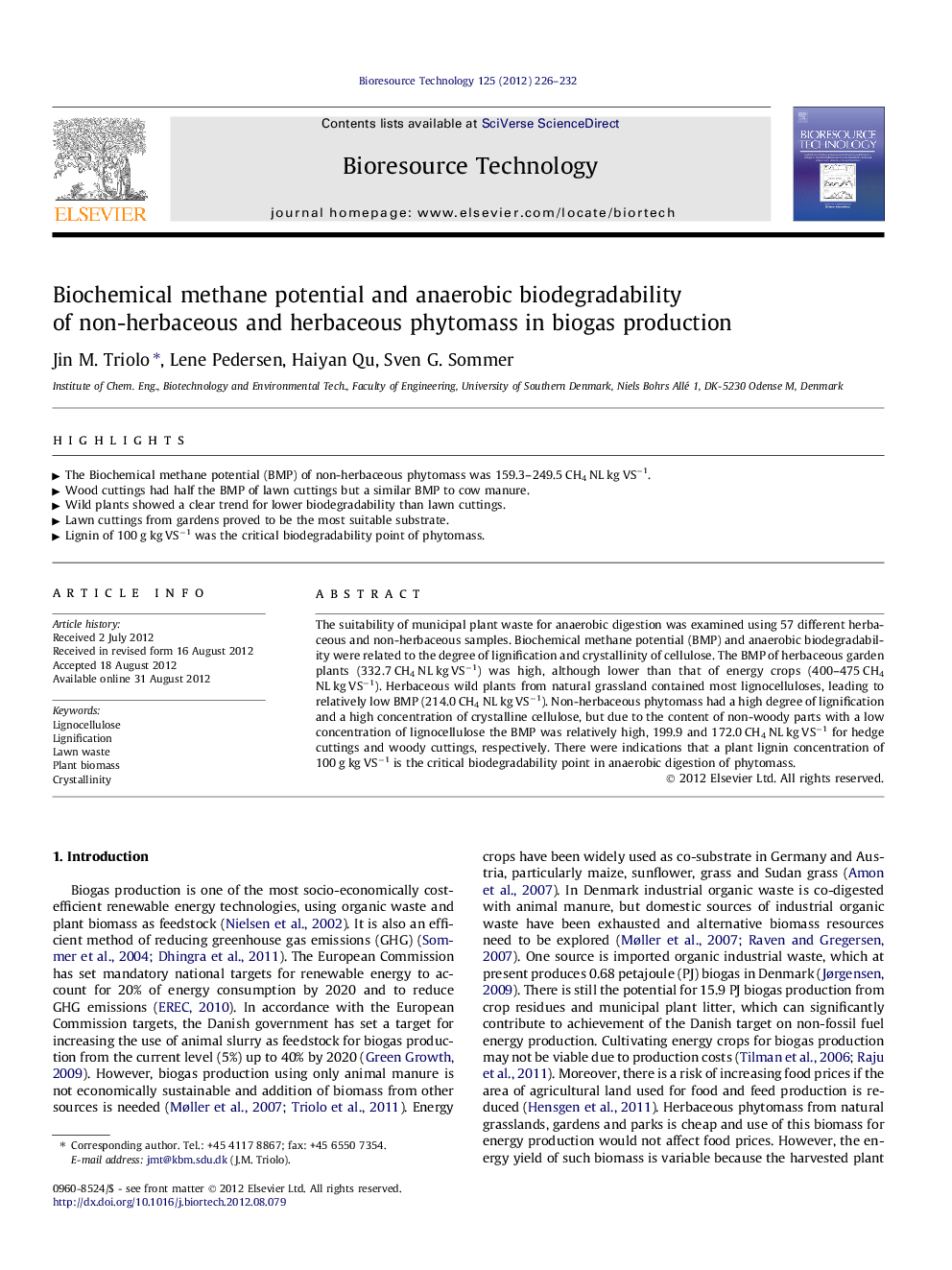| Article ID | Journal | Published Year | Pages | File Type |
|---|---|---|---|---|
| 681319 | Bioresource Technology | 2012 | 7 Pages |
The suitability of municipal plant waste for anaerobic digestion was examined using 57 different herbaceous and non-herbaceous samples. Biochemical methane potential (BMP) and anaerobic biodegradability were related to the degree of lignification and crystallinity of cellulose. The BMP of herbaceous garden plants (332.7 CH4 NL kg VS−1) was high, although lower than that of energy crops (400–475 CH4 NL kg VS−1). Herbaceous wild plants from natural grassland contained most lignocelluloses, leading to relatively low BMP (214.0 CH4 NL kg VS−1). Non-herbaceous phytomass had a high degree of lignification and a high concentration of crystalline cellulose, but due to the content of non-woody parts with a low concentration of lignocellulose the BMP was relatively high, 199.9 and 172.0 CH4 NL kg VS−1 for hedge cuttings and woody cuttings, respectively. There were indications that a plant lignin concentration of 100 g kg VS−1 is the critical biodegradability point in anaerobic digestion of phytomass.
► The Biochemical methane potential (BMP) of non-herbaceous phytomass was 159.3–249.5 CH4 NL kg VS−1. ► Wood cuttings had half the BMP of lawn cuttings but a similar BMP to cow manure. ► Wild plants showed a clear trend for lower biodegradability than lawn cuttings. ► Lawn cuttings from gardens proved to be the most suitable substrate. ► Lignin of 100 g kg VS−1 was the critical biodegradability point of phytomass.
